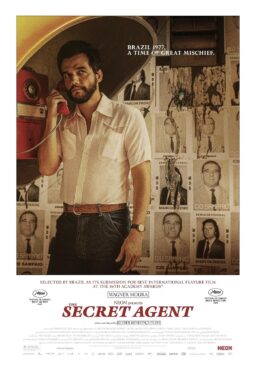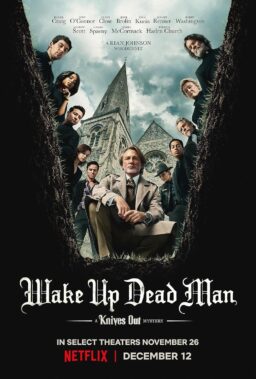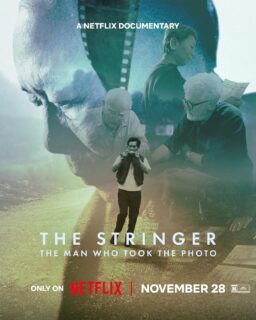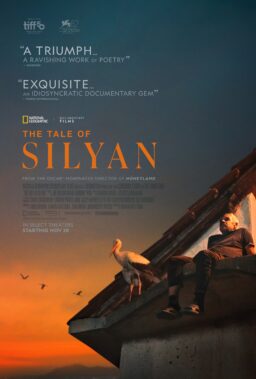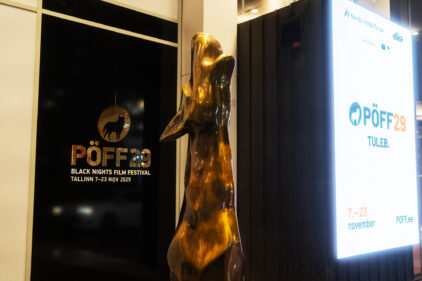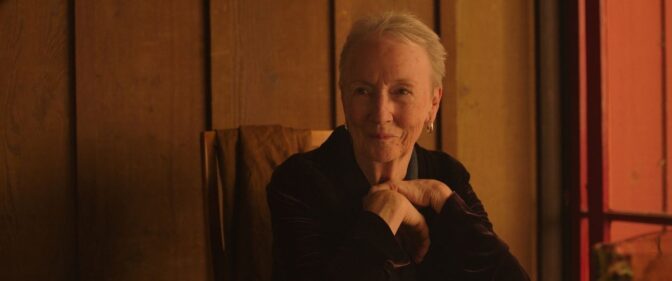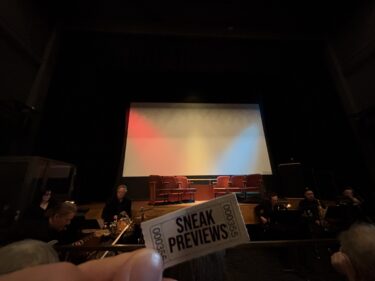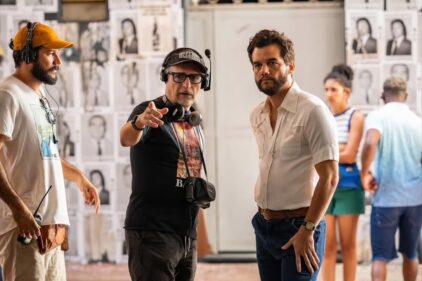“BLKNWS: Terms & Conditions”—the rich, multi-faceted feature directorial debut from Kahlil Joseph—is an immersion into Blackness.
That immersion—which pulls us into a becoming that is constantly moving, shifting, communing, and separating—isn’t accomplished by providing a static definition of Blackness. It occurs through Joseph’s unflinching resolve to apply the spontaneity that Black thought inspires to bend the medium of film to his own rules. By fashioning a rich work that pulls together references and sources from Black literature, music, politics, and meme culture, “BLKNWS: Terms & Conditions” stands as a seismic intellectual awakening.
“BLKNWS: Terms & Conditions” is a shade of documentary and passingly autobiographical. There are multiple history lessons in the film. But it’s not a dry lecture. It jostles between the past and future, and a time that has always been imagined in the minds of those who’ve thought deeply about Black life. The film begins simply enough with the intertwining of a memory and a dream: Joseph shares a copy of the Encyclopedia Africana, a gift from his father. The original idea for the book—a history of Black existence—came from W.E.B. Du Bois, who died before he could remotely come close to completing it.
With Du Bois’s original intent in mind, Henry Louis Gates and Anthony Appiah published a fully actualized version of that concept in 1999. Joseph then brings us into some of the reference book’s contents, jumping between pages that note everything from Willie Mays to Marcus Garvey to the Million Man March for a potent montage. Once it feels like the film will exclusively be about the encyclopedia, however, Joseph offers his first left turn, bringing viewers into a car where a reporter’s phone conversation can be overheard off-screen: She’s just returned from the Trans-Atlantic Biennale, which took place on an Afro-futuristic vessel called the Osiris, and is writing a piece about it. Those two sequences unfold over the first eight minutes, rousing the viewer with an intuitive rhythm and an uncommon visual language that speaks to Joseph’s bold vision.
Joseph introduced the film at Black Harvest Film Festival, where he accepted the festival’s Visionary Award, by saying that “BLKNWS: Terms & Conditions” isn’t a movie, at least not in the conventional sense. A visual artist and music video director, Joseph first gained acclaim making short films for Flying Lotus’s “Until the Quiet Comes,” Kendrick Lamar’s “good kid, m.A.A.d city,” and Beyoncé’s “Lemonade.” Back in 2021, in fact, I was fortunate enough to be at Telluride Film Festival, where Barry Jenkins programmed a block of Joseph’s work. Seeing his films streamlined in sequential order was actually a good primer for “BLKNWS: Terms & Conditions,” especially since the short his feature is adapted from, “BLKNWS,” was also part of that programme.
Joseph’s intent with “BLKNWS” was to use the news medium to create an imagined broadcast that retooled the inherent dehumanization of news reporting on Black life into a celebration of it. Much of the way he accomplishes that feat, visually and sonically, recalls that Telluride day, mish-mashing seemingly incongruous tracks and visions into one coherent form.
Joseph tames his unruly material through the language of music. “BLKNWS: Terms & Conditions” is split into several chapters or vignettes that Joseph calls tracks. He also employed a vast writer’s room of thinkers: from Saidiya Hartman to Irvin Hunt to Christina Sharpe—while bringing on directors like Arthur Jafa, Kaneza Schaal, Raven Jackson, and Garrett Bradley to direct some of the tracks. By viewing the film as an album, he becomes the primary artist, and his contributors become the collaborators you’d typically find on individual songs. The same could be said of Bradford Young, who is credited as the overall DP, even though Jomo Fray shot Jackson’s sequences.
That expansive scope is why I won’t hazard a summarization of “BLKNWS: Terms & Conditions.” It’s the type of film that can neither be summed up in a few pithy sentences nor spoiled. It involves plenty of logical ideas, but is, in fact, wholly illogical. Instead, it’s worth examining its many threads. Though the Encyclopedia Africana initially allows Joseph to reflect on his Brazilian father, it shifts in its second half to his Black-Italian mother. Thereby centering his autobiographical traits as emblematic of Pan-Africianism.
The first half of “BLKNWS: Terms & Conditions” also references Du Bois’s The Philadelphia Negro: A Social Study through black-and-white sequences set in 1899 that depict a young Du Bois interviewing two Black women living in a modest apartment about the state of the Negro in the city. Later, in scenes shot by Garrett Bradley in Accra, Ghana, we’re introduced to an older Du Bois reflecting on Pan-Africianism and Garvey, and the hurt of America revoking his passport. As the film progresses toward the older Du Bois, it makes fewer references to the encyclopedia. And while you’d expect everything to unravel upon losing that through line, this picture actually intensifies due to Young’s tactile photography and the persistence of Joseph’s desire to memorialize the author of The Souls of Black Folks.
That reverent tone, on its face, is juxtaposed with Joseph’s playful dissection of the news. Nevertheless, Joseph also uses the medium to uplift Black journalism as a form of archiving. It’s no accident that aboard the Osiris, a journalist (Shaunette Renée Wilson) hopes to interview an arts academic (Keneza Schaal, playing a fictionalized version of real curator Funmilayo Akechukwu) or that Joseph highlights Ghanaian journalist Anas Aremeyaw Anas’s methods and anonymity—which is playfully referenced here through Miyazaki-inspired animation—and considers how Anas’s clear-eyed search for truth has created his own fugitivity. By interweaving these forms of reporting with memes, YouTube videos, Twitter threads, and more, Joseph demonstrates how Black virality, whether through news coverage or social media, mirrors the spontaneity necessary for Black folks to record Black life in a world intent on erasing it.
It’s therefore telling that Joseph makes use of Resonance Field theory, which holds that an external force of equal frequency causes the object acted upon to be amplified. That theory, of course, matches the arc of Black existence, whereby the external forces are racism, the slave trade, and systemic oppression. At the same time, the amplified result is a communal diaspora, charged with poetry, dance, music, and the perception of a state of being. Joseph’s thesis, in fact, is further intensified by his decision to intermingle the English Nigerian artist Klein with techno, particularly the sounds of Detroit first-wave artists like Juan Atkins, to fortify the complex text he’s composed.
While “BLKNWS: Terms & Conditions” spans 113 minutes, the film feels much larger, more epic, and more comprehensive. I’ve had the pleasure of watching it three times, and after each interval, I’ve walked away noticing, remembering, and even imagining various components. This is a challenging, dense, and all-encompassing picture that works best when it’s allowed to wash over you. What is left on the shore after the tide of “BLKNWS: Terms & Conditions” recedes is imperative and also reliant on the idiosyncrasies of the viewer, leaving much to comb through before the next necessary watch.




